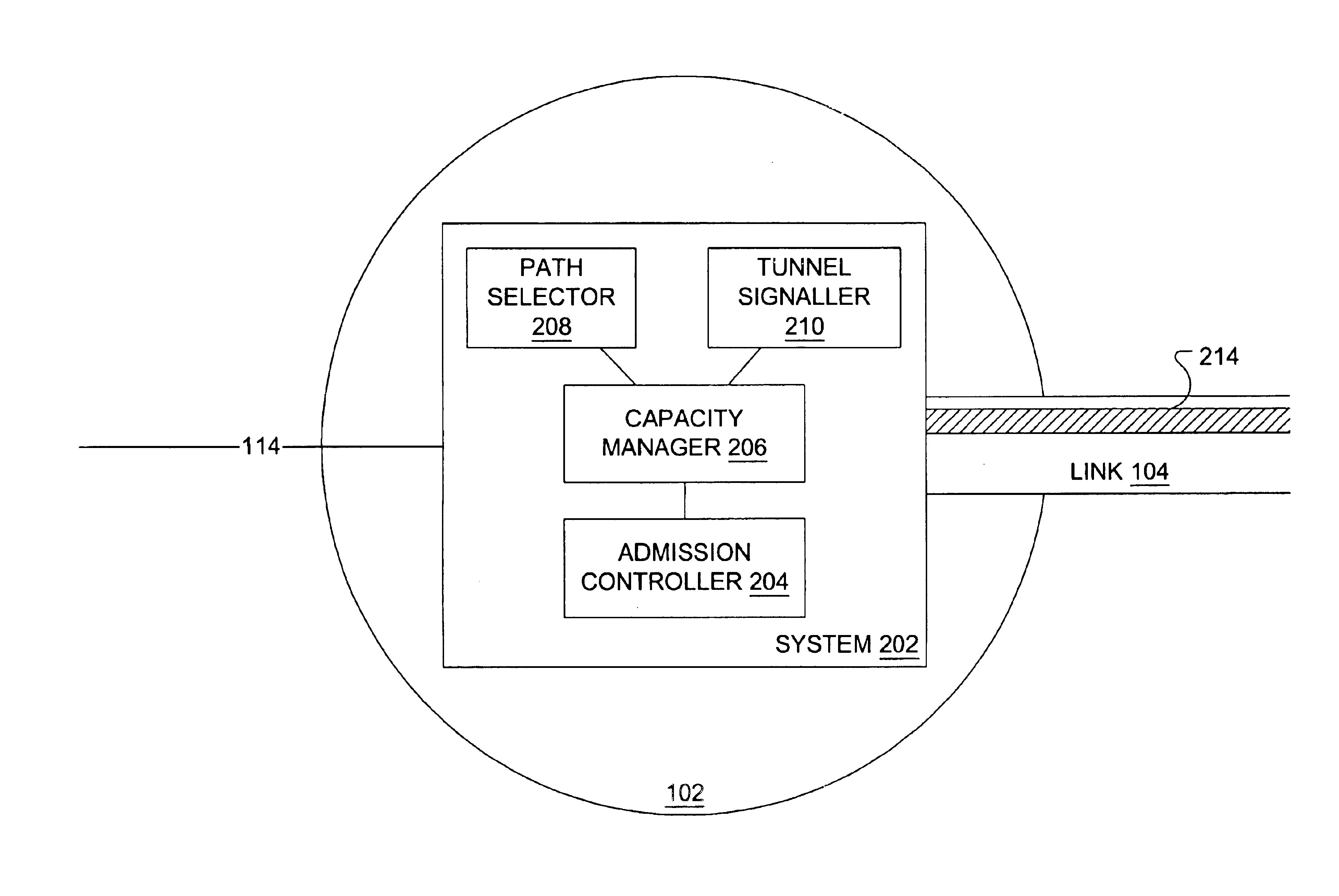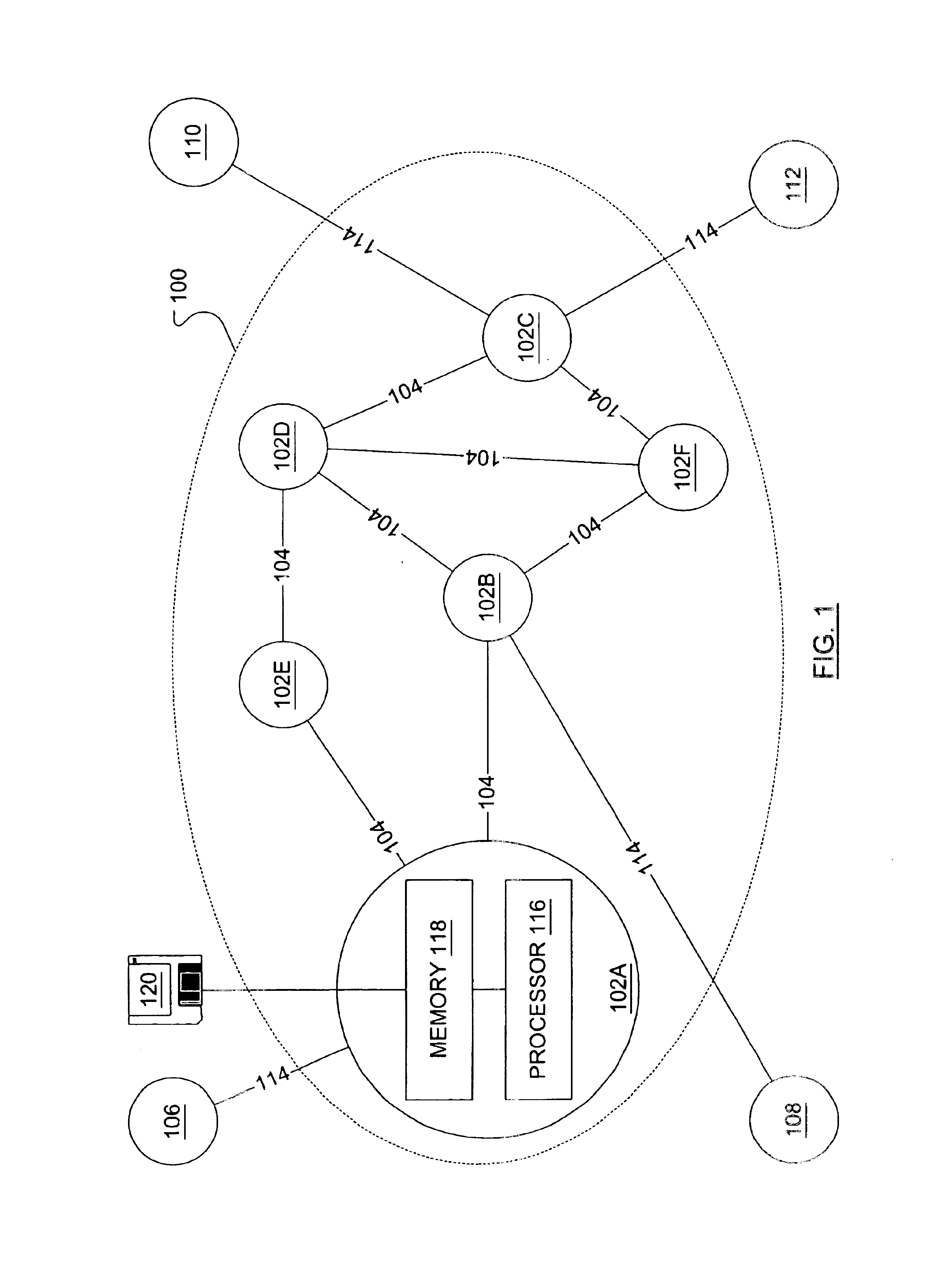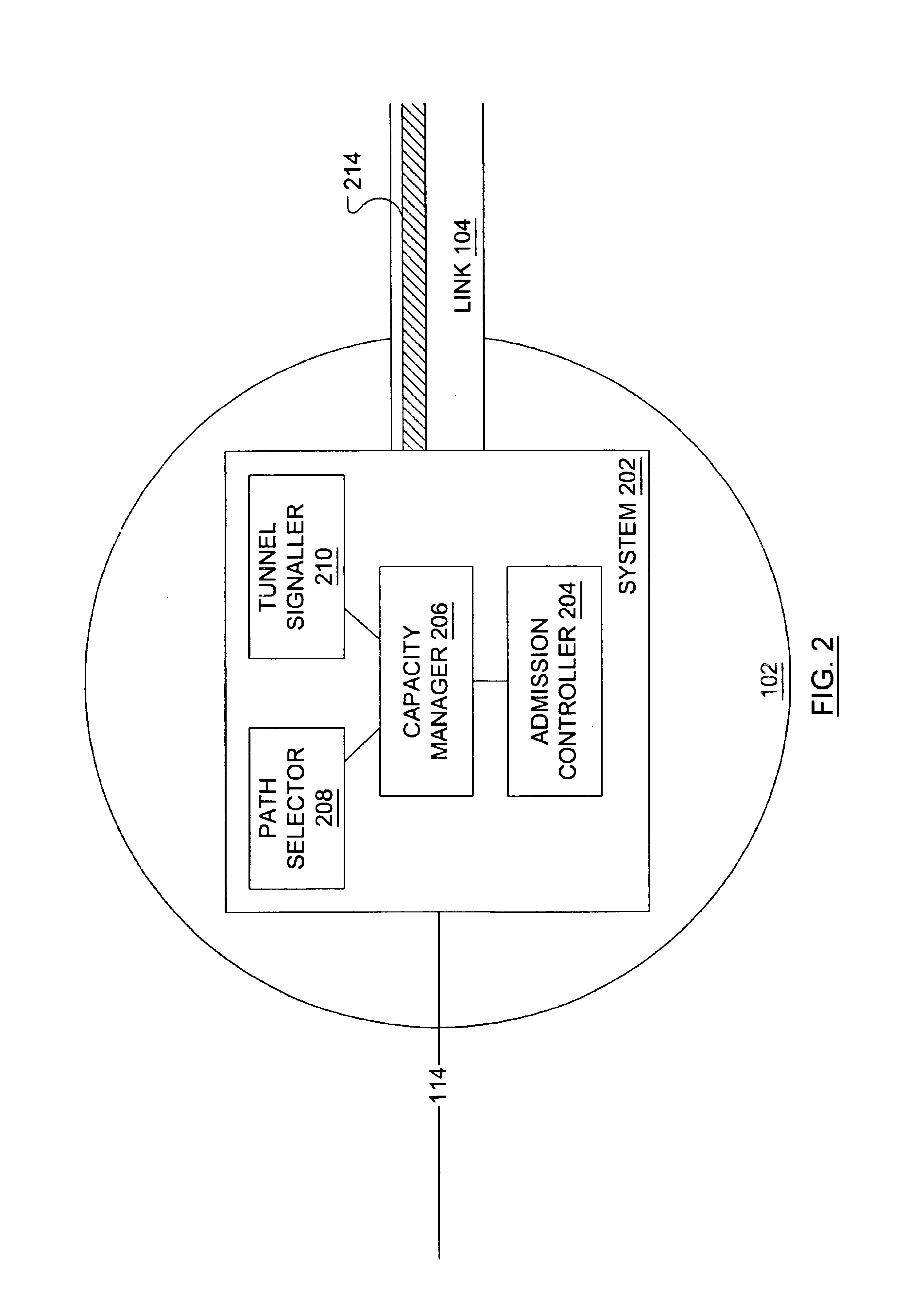Automated and adaptive management of bandwidth capacity in telecommunications networks
a technology of automatic and adaptive management and bandwidth capacity, applied in the field of telecommunications networks, can solve the problems of limited approach to atm networks, limited approach to specific types of networks, and achieve the effect of fast and efficient bandwidth managemen
- Summary
- Abstract
- Description
- Claims
- Application Information
AI Technical Summary
Benefits of technology
Problems solved by technology
Method used
Image
Examples
Embodiment Construction
FIG. 1 illustrates a network 100, suitable for use with the present invention, comprising a plurality of nodes 102 and network links 104 between the nodes 102. Particular ones 102A, 102B, 102C of the nodes 102 serve as “edge nodes” connecting to nodes 106, 108, 110, 112 in external (or higher layer) networks over connections 114. Other ones 102D, 102E, 102F of the nodes 102 serve as “core nodes” connecting only to nodes 102 within network 100. Node 102A is shown to include a memory 118 and a processor 116 loaded with capacity management software for executing methods exemplary of the present invention from software medium 120. Software medium 120 may be a disk, a tape, a chip or a random access memory containing a file downloaded from a remote source.
Components of a system 202 as part of an exemplary edge node 102 are illustrated in FIG. 2, where the system 202 is used for automated adjustment of a reserved capacity in a tunnel. An admission controller 204 receives, over the connect...
PUM
 Login to View More
Login to View More Abstract
Description
Claims
Application Information
 Login to View More
Login to View More - R&D
- Intellectual Property
- Life Sciences
- Materials
- Tech Scout
- Unparalleled Data Quality
- Higher Quality Content
- 60% Fewer Hallucinations
Browse by: Latest US Patents, China's latest patents, Technical Efficacy Thesaurus, Application Domain, Technology Topic, Popular Technical Reports.
© 2025 PatSnap. All rights reserved.Legal|Privacy policy|Modern Slavery Act Transparency Statement|Sitemap|About US| Contact US: help@patsnap.com



